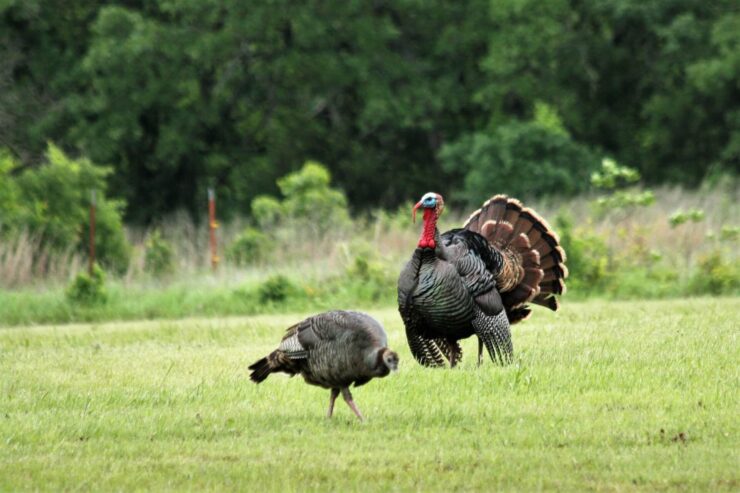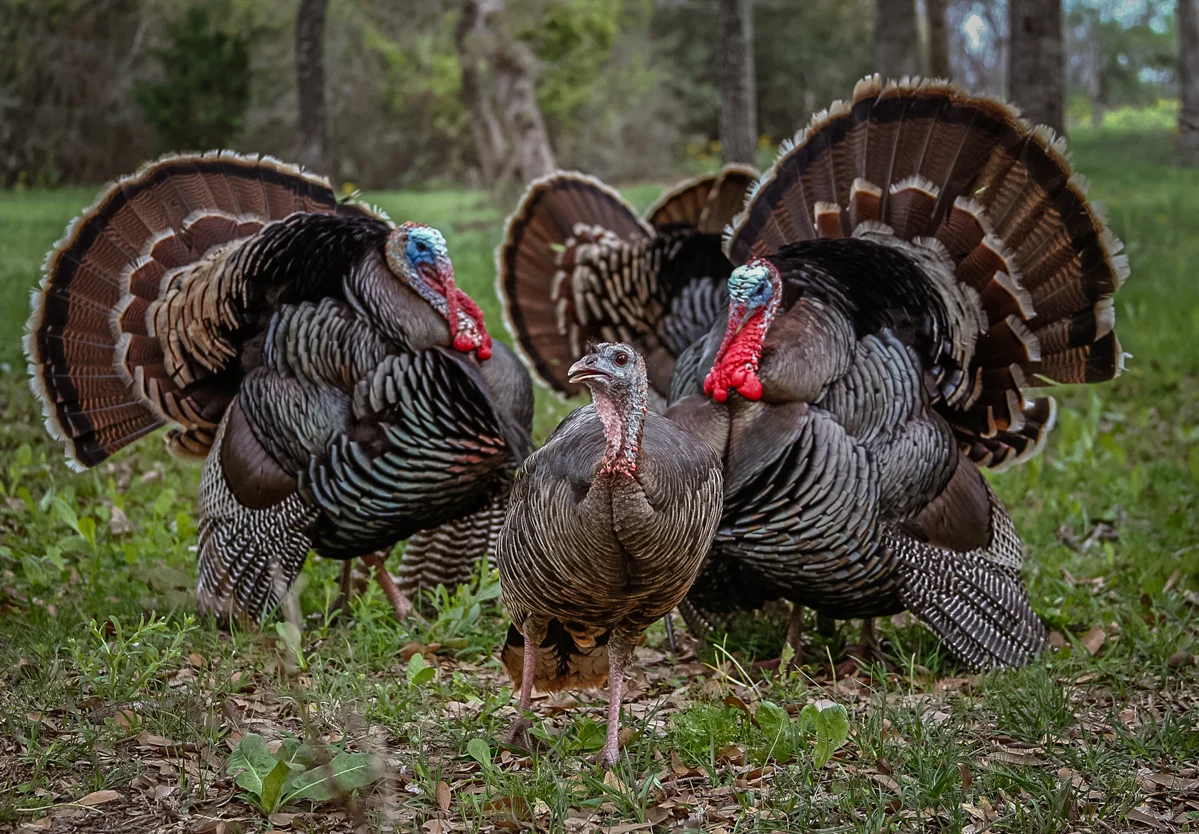The question of how to identify a turkey as a hen or a gobbler, male or female might seem like a silly question to a seasoned veteran, but to the beginner, positive identification is a skill that doesn’t come just because you decided to take up the sport.
A little study and time in the field will have you picking out the gobblers with the best of them.
The Beard
The most obvious difference between hens and gobblers is the beards that the males (gobblers) have. This is often the easiest method to identify gobblers but in some instances (~10%) hens have beards too! So use this as your first indicator but just keep in mind that it isn’t foolproof.

Size
A gobbler’s body size is often larger and this can help when a gobbler is with hens but judging size, especially in uneven terrain can be hard to do. Solitary birds can be difficult at the best of times and can fool even the most veteran hunters.
Fortunately, as hunters we have a number of different indicators we can use so we don’t often have to rely on just one indicator.
The Head
The gobbler’s head adornments are not readily visible until his second year but first-year birds (jakes) are not favored or even legal in many states anyway so the head coloration is a good indicator of shootability especially in the spring.
In the spring, it is relatively easy to distinguish males from females. Gobblers exhibit bright red wattles and light blue cheek patches. This is the best way to identify a turkey from a distance.
Feathers
The only sure way to tell a gobbler from a hen is to examine the lower breast feathers. The tips of male turkeys are black whereas in hens they are white or buff colored. Although differences can be seen at some distance if binoculars or a spotting scope is used, sex identification via breast features might not be useful when gobbler or spring seasons are underway.
Once you have a bird down in a fall hunt, the best way to identify its sex is by the breast feathers.
Last Words
By combining the above factors you will be able to spot the difference between a hen and a gobbler in no time. Now that you have mastered identifying gobblers pop over and learn how to make turkey sounds.

